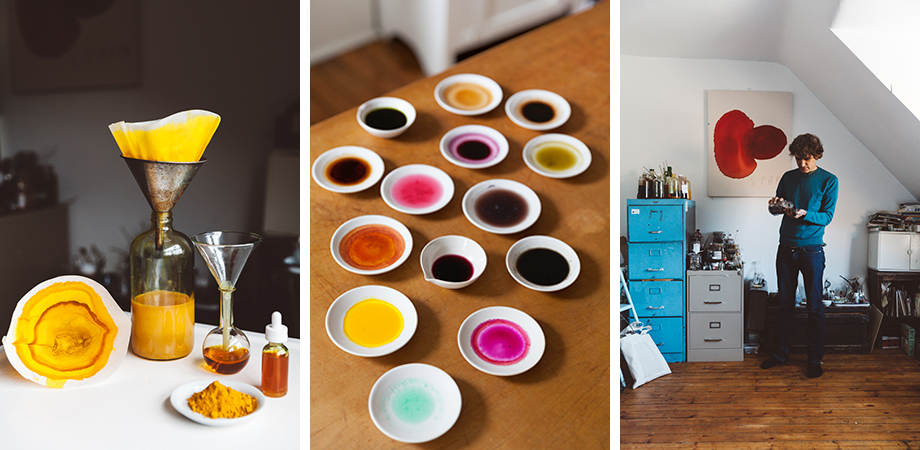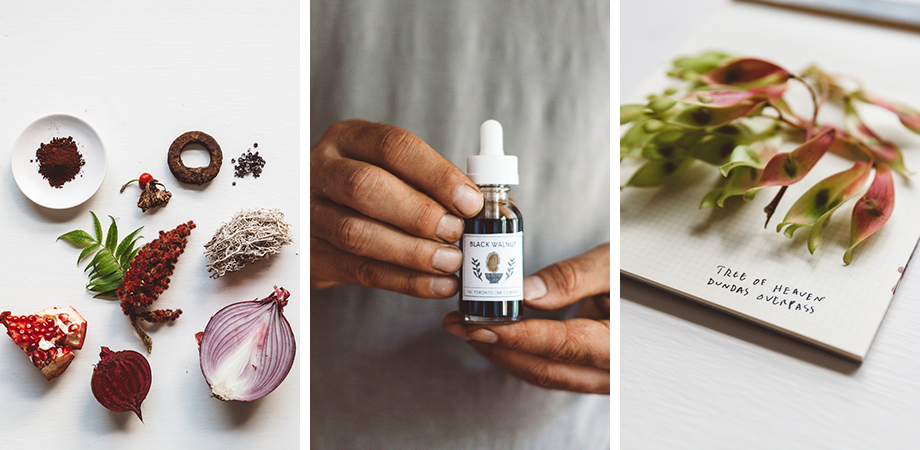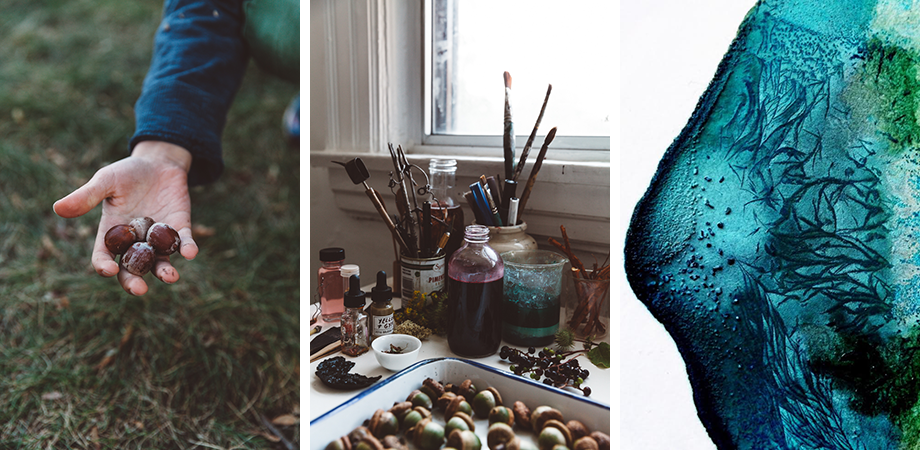
The moment Toronto-based Jason Logan became a father was the moment he looked at the toxicity of art supplies and wondered if he could make his own. This was the beginning of a mission to transform how we print on paper with ink, by switching from poisonous chemicals to natural extracts. The experiments took off from there, and production began by making ink for some of his favorite artists and has since expanded to shops in Toronto and the U.S. Logan aims even higher. He believes using inks based in natural extracts could start an industry revolution.
His interest in ink is rooted in his background as designer, printer, and user of ink.
He moved from a degree in history to illustration for newspapers and magazines, to editorial design, to creative director for brands, and wrote a few illustrated books along the way. He has even worked with the Toronto government, campaigning for an office of creative direction for the city, and was named “Agent of Change by the Centre of Social Innovation.” “Since forever I have always carried around a sketchbook, bottle of ink, and brush,” he says. “Ink to me is the atomic building block of ideas—a sometimes clear, sometimes blurry, communication medium for words and pictures.” Yet we take the content ink for granted.

Many of his inks are food-based and edible. “While I don't recommend drinking ink,” he warns, “I use food-grade shellac, all natural materials and I make everything in my kitchen lab. Like natural skin care products, the inks are all natural, but it still seems wrong to make a meal out of them. I can't call them organic because I harvest them from the wild-spaces of cities.” That said, the pure wild grape ink that Logan makes could be bottled as a kind of extravagant grape juice. It really is delicious. He also has quite a few recipes in his upcoming book, Make Ink: A Forager's Guide to Natural Inkmaking (Abrams Books, September 2018), that use color from the kitchen: carrots, black beans, blueberries, turmeric, and onion skins all make beautiful ink colors.
Logan revels in taking an experimental “let’s try this” attitude to every new project. Recently someone requested ink made out of the torn down structures of a famous old hotel, and he found himself grinding down bricks, taking soil samples, and researching its most famous guests. “I also like to take a single plant, say buckthorn, which is an invasive bush that grows all over North America, and deeply research all of its color possibilities. The juice from its berries can move from a dark purple to a golden green depending on its PH balance. Its inner bark makes a bright yellow, and its wood, when burned down to ash, becomes a beautiful carbon-based ink or an important component of explosives.” At any given time Logan has half a dozen inks that he sells and half a dozen inks that he is developing for the future. “Right now, I am very excited by a felt grey ink I am inventing that includes suspended particles of ash that come from a dinosaur era fern.”
Before a recent Skype call, I pictured Logan in a mad scientist's lab. Although I didn’t see a trace of Frankenstein’s laboratory, he says, “You should talk to my wife. Sometimes our whole house is covered in beakers of crystals while the backyard transforms into series of bubbling pots and carbonizing BBQ set ups.”

This kind of experimentation can lead to surprising outcomes, like the success he had with a foraged cigarette-butt ink that started in a kids’ ink workshop he had hosted. While success is part of the process, his failures are epic too. “The time I tried to microwave shellac flakes was particularly memorable,” he moans. “There was also the explosively fermented ink I sent to Stephen King. But there are hundreds of failures. Some of them go on to become something useful years later. I have a cabinet of graveyard of failed experiments that really could be a second book.”
Logan’s work involves making ink that is more than simply sustainable. For him, sustainability is not enough. He calls his work an “ink revolution.” He believes that while designers, artists, printers, and silk-screeners do think responsibly about ink, they may not have considered natural, place-based ink. He imagines this revolution equivalent to what Alice Waters did for food.
“Like carefully considered local food, natural ink can be more beautiful, more ethical, safer, and subtler than commercially produced ink. Consider the art supply store, graffiti, outdoor posters, books, even your home printer: imagine if you could take control of materials that go into color, letterforms, and imagery. Imagine a highlighter with the delicious color and scent of turmeric. Like the slow food movement, there is a component of foraging here too. The kind of color hidden in common weeds, trees, and even rusty nails and broken bits of drywall in the alleyways of cities is extraordinary,” Logan states with passion.
Perhaps his book will launch the revolution, and will inspire people to explore their cities with an eye to color and making their own ink; to take back this oldest of human communication systems from the big chemical producers for use in their own way.
